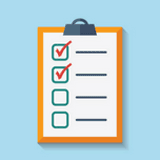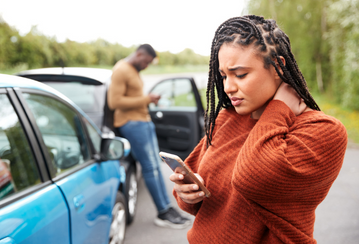News and Updates
Don’t get “wheeled” into a staged car accident
March is Insurance Fraud Prevention Month. It’s the perfect time to learn about one of the most common types of auto insurance fraud: staged collisions. And, more importantly, what you can do to lower your risk of being a victim and help fight fraud.
Common types of staged collisions
There are three main types of staged collisions:
-
The Swoop and Squat: This scenario often involves two or more vehicles working together. The fraudster will pull quickly in front of a driver and slam on their brakes to cause a rear-end collision. The other vehicles involved in the scam may drive alongside the target or box them in to prevent them from avoiding the crash. The front vehicle will often contain several passengers who will all claim to be injured.
-
The Drive-down or Wave-in: This scenario often occurs in either a parking lot or in heavy traffic. In the parking lot version, the fraudster will wave on a target vehicle trying to exit their parking spot. Then, will accelerate into them causing a collision that makes the target appear at fault. In the traffic version, the fraudster will wave in a target vehicle trying to change lanes and then accelerate into them. Again, making the target appear at fault.
-
The Target and Bullet or The Target Left Turn: In the Target and Bullet scenario, the fraudster intentionally hits a target vehicle. This scam has many variations, but a common version is known as the Target Left Turn. In this scenario, the target vehicle is waiting to turn left at an intersection. The fraudster waves them through and then accelerates to cause a collision.
In all the above scenarios, fraudsters may be working as part of a “fraud party” to maximize profits from the scam. These criminal rings often include tow truck operators, multiple drivers and passengers, and false witnesses who will claim the target is at fault. Together, the fraud party will drive up the cost of the collision with false claims of:
-
Vehicle damage
-
Injury assessment, treatment, rehabilitation, and assistive devices
-
Loss of income
-
Towing fees and additional services (wait times, scene cleanup, etc.)
Warning signs of auto insurance fraud
Watch out for these warning signs you’ve been involved in a staged collision to lower your risk of being a victim of auto insurance fraud.
-
Suspicious or unpredictable driving behaviour. Was the other vehicle following too closely, cutting you off or waving you into a different lane in heavy traffic?
-
Being prevented from changing lanes. Were other vehicles following closely behind or beside you, boxing you in?
-
Phoney witnesses. Has a group of witnesses suddenly appeared on the scene, all supporting the other driver’s version of events?
-
Sudden appearance of passengers. Does it seem like several passengers have shown up out of nowhere, all claiming to be injured?
-
Exaggerated injuries. Do the driver and passengers of the other vehicle all seem to be claiming serious injuries despite minor damage to the vehicle?
-
Swift arrival of a tow truck. Does a tow truck seem to appear and start working immediately after the collision, despite not having been called?
-
Pressure to sign documents. Are you being pressured to sign documents like blank insurance claim forms?
What to do if you’ve been involved in a collision (staged or not)
If you’ve been involved in a collision, remember the acronym S.A.F.E.R. and follow these five steps.
-
Stay calm. Staged collisions happen very quickly, and fraudsters rely on a target’s panic to cloud their judgment and make them easier to scam. Stop your vehicle and, if safe to do so, move it off the road.
-
Assess the situation. Keep an eye out for the warning signs of staged collisions. Look at the damage to all vehicles involved. Check to see if any drivers or passengers are injured. If someone is seriously injured, do not move them until medical help arrives.
-
Flag the professionals. If anyone is injured and/or vehicle damage appears greater than $2,000, call 911 to get medical and police assistance. If there are no injuries and damages appear less than $2,000, contact your local police department to report the collision.
-
Exchange information. Record names and contact information for all drivers, passengers, and witnesses on the scene. Get vehicle details and insurance information from all drivers involved. Take plenty of photos and/or videos of the collision scene, vehicle damage and road conditions. Do not sign any documents or agree to anything on the scene of the accident.
-
Reach out to insurance. Report the collision to your insurance provider as soon as the crisis is handled and you’re in a safe place. If you suspect you’ve been a victim of auto insurance fraud, tell your insurer and local police.
Unfortunately, anyone can be a victim of auto insurance fraud. That’s why it’s important to know you have the coverage and support you need if you were to be involved in a staged collision. If you’re shopping for car insurance, contact an OTIP broker at 1-833-615-9326 to get a free quote. Or, if you’re a current OTIP policyholder, call 1-833-494-0089 to review your policy and inquire about your coverage options.
Related articles: Learn how to protect benefits fraud – and protect your plan, Helping to prevent benefits fraud, Fighting Fraud, and How to protect yourself from restoration fraud.





